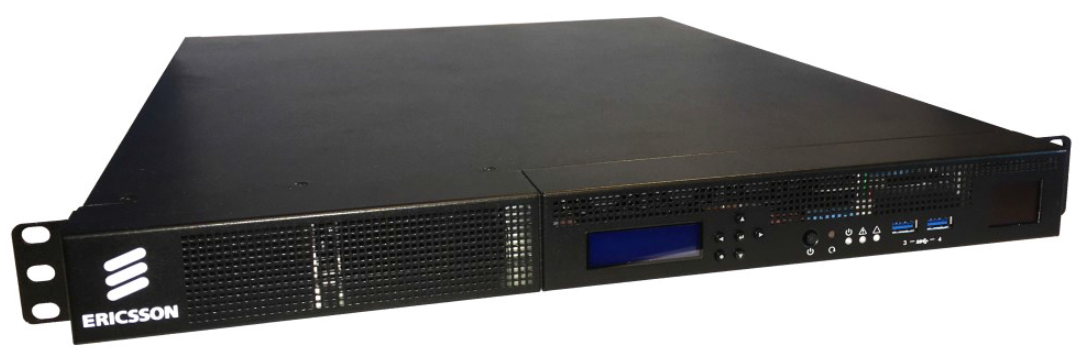Ericsson Integrates Fraunhofer’s MPEG-H TV Audio System Into Its Contribution-Encoder/Decoder Solution
ERLANGEN, Germany/LAS VEGAS, Nevada – Ericsson Media Solutions, one of the leading suppliers of professional broadcast media solutions, is the first manufacturer to support the MPEG-H TV Audio System in contribution applications.
At the NAB Show, Ericsson introduces its AVP 2000 Contribution Encoder and companion MediaFirst Content Processing (MFCP) Decoder as the industry’s first contribution-path encode/decode solution with support of the MPEG-H TV Audio System, substantially developed by Fraunhofer IIS. MPEG-H is the only next-generation broadcast audio system in regular operation in the world, having been launched by South Korean terrestrial UHD broadcasters in May 2017.
The new Ericsson solution enables broadcasters to generate an MPEG-H bitstream with all the necessary metadata at the site of an event and transport it back to the studio for further processing and final emission. This Ericsson solution opens yet another application area for MPEG-H, which can now cover all broadcast use cases.
“We are proud to work with Ericsson on a contribution solution for MPEG-H, making it the first next-generation audio technology that can be used in the contribution path between an off-site location, such as a live sporting event or remote studio, and a broadcast studio’s emission encoder,” said Marc Gayer, Head of the Business Department at Fraunhofer IIS Audio and Media Technologies. “An important component of this contribution link is support for audio-related metadata, which is essential for delivering key MPEG-H features.”
“As one of the world’s largest suppliers of hardware and software media solutions for TV and media-service providers, Ericsson Media Solution’s global market presence will help bring MPEG-H’s high-performance sound and next-generation immersive audio capabilities into the industry mainstream,” said Arpad Jordan, Head of PDU Media Processing & Delivery, Ericsson Media Solutions.
For broadcasters and streaming services, the MPEG-H audio codec enables the cost-effective delivery of multichannel audio at comparably low bit rates while delivering a host of new consumer capabilities, including immersive cinema-like sound and personalized audio mixes. Broadcasters and service providers can add MPEG-H without changing their underlying plant infrastructure. The new equipment works with SDI infrastructure and includes a robust and secure mode to carry the metadata.
Ericsson Media Solutions and the Fraunhofer IIS collaborated closely in integrating MPEG-H 3D Audio into the AVP 2000 Contribution Encoder and MFCP decoder. The AVP 2000 is one of the most flexible video-processing solutions in the market, delivering a comprehensive range of processing options, including MPEG-2, MPEG-4, AVC, JPEG-2000, and HEVC at resolutions up to 4K. It enables broadcast professionals to author legacy audio content or immersive content and to define label descriptions and simple end-user controls on a TV’s GUI. It also enables A/V-sync and loudness-level signaling. The MFCP, used here as a 4K HEVC professional decoder, is an application based processing platform that blends the benefits of latest software processing techniques with hardware-based high quality, high reliability, and low latency.
The Ericsson solution will be commercially available during Q2 2018.
For more information, visit www.iis.fraunhofer.de/tvaudio and https://mediasolutions.ericsson.com.
About the MPEG-H TV Audio System
MPEG-H’s key consumer benefits include interactivity and personalization features, immersive sound with realism-enhancing overhead sound, and universal delivery.
MPEG-H supports immersive sound, with up to four dedicated height channels that reproduce sound above the listeners’ heads plus additional channels that reproduce sound around listeners in the horizontal plane. Sounds don’t just move from left to right and from front to back but also up and down, adding realism to scenes in which planes fly overhead or rain pounds down on the roof of a building. In future TVs or soundbars with 3D virtualization technology such as Fraunhofer’s UpHear, immersive sound can be delivered without cluttering up a room with multiple speakers.
Unlike traditional surround technology, MPEG-H can treat individual sounds as “objects,” each of which can be placed more precisely in three dimensional space and moved seamlessly around and above viewers. Consumers will hear a bee buzz around their heads, fly up and down, and alternately get closer and farther away before flying off into the sunset.
With object-based audio, MPEG-H also delivers a host of customization and personalization features. Listeners, for example, can raise the dialog level without altering other sounds, enabling soft passages to be heard in a noisy room. Viewers could also select dialog in different languages and select individual car-to-pit-crew radio conversations during an auto race – all if enabled by audio-related metadata inserted by a program provider.
MPEG-H also makes it possible to automatically adjust loudness to a desired target level so that volume levels don’t abruptly jump when viewers switch between video sources and channels or when a commercial interrupts a TV program.
Additionally, the MPEG-H TV Audio System tailors all content to sound best on any end device, providing universal delivery.
In addition to being part of the audio standard for the ATSC 3.0 UHD terrestrial-TV standard, MPEG-H is also part of the DVB UHD TV broadcast standard.
About Ericsson Media Solutions
Ericsson Media Solutions has a longstanding and broad customer base in cable, satellite, and telecom service providers, as well as major broadcasters. Globally, Ericsson Media Solutions serves over 900 operators, service providers, broadcasters, content providers and aggregators. The wide-ranging media portfolio of end-to-end offerings includes Emmy award-winning hardware and software video compression solutions for Contribution and Direct-to-Consumer video service distribution, advertising and content personalization solutions, high efficiency Cloud DVR, and TV and video delivery platforms. Ericsson Media Solutions has approximately 1,600 employees operating out of multiple locations across the globe.


